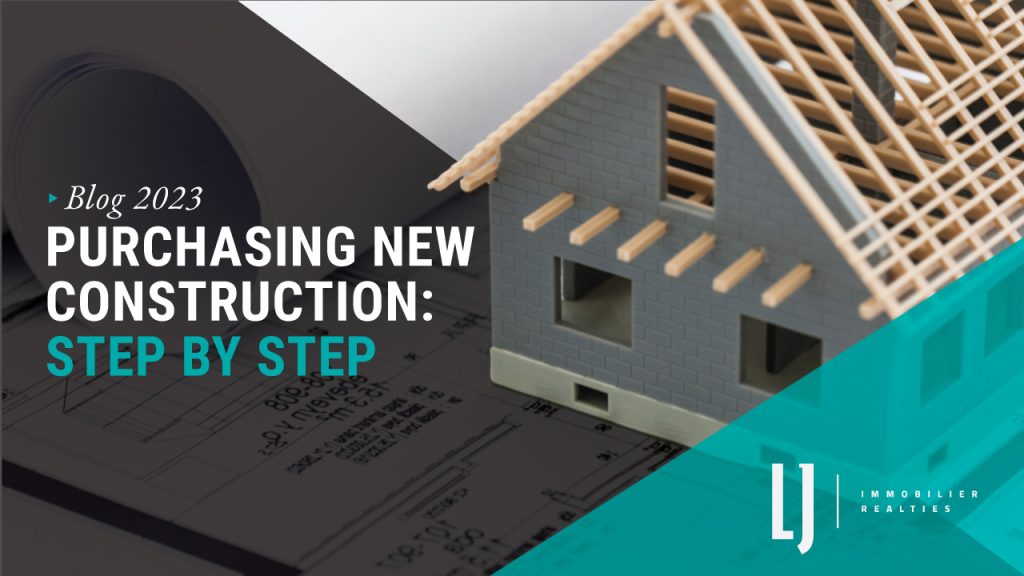
If you’re buying new construction, the process won’t be the same as a typical home purchase. So, we’re walking you through what you can expect!
Step 1: Project selection
It’s important to vet the developer, the area, and the timeline behind each project. Once you’ve given your real estate agent some of the criteria you’re looking for, we’ll be able to scour the market for any new projects that suit your vision and present an information packet.
Step 2: Unit selection
After selecting a project that’s up your alley, we will meet with the developer and choose your unit. You’ll need to consider the floor that it’s on, the size, the orientation (i.e. north-facing, south-facing), sun exposure, and any outdoor space.
Some quick tips to remember:
- Developers are experts in making units look really, really large. However, they’re always pitching you the gross square footage – not the net footage. Gross sqft. includes closets, wall space, etc. Typically, in resale, we describe properties based on the net square footage because it defines the actual livable space.
- The second thing you have to look out for is the balconies.Some developers will pitch their balcony square footage included in the total space. This makes the unit seem larger on paper, but I want to make sure
- When looking at orientations, consider: is the lot next to you already built up? Is it something they can build on top of? If new construction is added there, it may potentially obstruct your sunlight, and will cause massive noise disruptions for months or years.
- Certain features are a little bit more expensive. So if you’re on a corner unit, you typically have more windows, more sun exposure, and a better view. That’s something that comes at a premium versus a unit of similar size and layout in the middle of the building.
- When you pick your unit, you have the ability to customize. All of this comes at an additional cost, but you have a little bit of wiggle room because the property has not been built yet. So you can play a little bit with the interior walls and move things around to fit your lifestyle even better.
Phase 3: Documentation
This next step comes down to paperwork. It’s also the point where you may start seeing delays.
Typically speaking, you will sit down with the real estate agent and the developer’s representative. Once you’ve picked a unit, you will go through the entire preliminary contract. This document outlines which unit you’re purchasing, the expected delivery date, and the financial timeline.
This brings us to the first 10- to 15-day delay, which is where we start off with obtaining a general mortgage approval. You usually have to give an initial deposit maybe – $5,000 to $10,000 – to lock in this unit during your due diligence phase.
After that, it’s the analysis of the deposit structure. The balance of that first deposit will typically be due after the initial due diligence, then you’ll lay out the structure of the next down payment period.
Step 4: Construction delays
Let’s say the developer gives you a date of delivery in March. You can expect that there’s going to be a three to six month delay right off the bat. So that’s something you want to factor into either your budget or your timeline.
Whether you’re staying at home with your parents or renting out a short-term place, it’s very important to ensure that you’re flexible. If you’re somebody gets really stressed out about a delay or somebody being late, this is not the avenue for you.
Step 5: Interior finishings
Now, for the fun part: you get to choose your finishes. This is when you’ll head to the showroom and start styling your new home. Different projects will give you different options, as will your chosen unit or package, so you should be able to customize various elements from kitchen counters and bathroom tiling to wood flooring and fixtures.
Phase 6: Delivery
For brokers, the coolest part of the delivery is doing the inspection of the unit. This isn’t your classic inspection, where you need an inspector to verify top-to-bottom. Since you’re getting a brand new warranty on this building, a lot of that stuff is going to be covered, so you’re really inspecting for defects.
Are there problems with the paint? Are there chip marks? Was there a crack on the quartz? It’s an in-depth analysis of anything that should be fixed prior to you receiving the unit so that you’re not responsible for any of these things.
We recommend bringing along a friend or family member who is detail-oriented or analytical to really scope the scene out inch by inch. We typically go back to the developer with a list of one to five items that need to be corrected on their part. So, the more eyes you can get on your place, the better – because this is a huge part of getting the product that you were promised.
Post-moving: Final delays
At this point, you may encounter a delay regarding the common areas. Common areas usually take a little bit longer to get finished, and are typically completed after the rest of the construction is completed. Don’t start planning pool parties and barbecues right away because you probably won’t have access to those things!
That’s everything you need to know about purchasing new construction. Have even more questions? Reach out to our team and we’ll get back to you in a flash!





